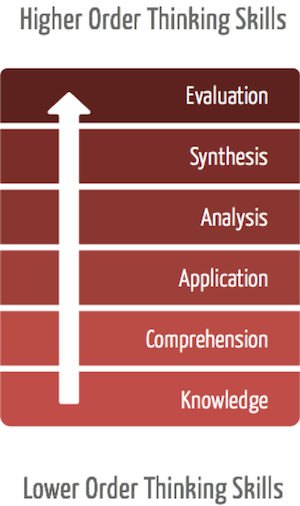Kudos to the Auburn School Department:
- for searching out potential solutions to increase student literacy.
- for designing a comprehensive roll-out plan & feedback-system beyond the purchase of iPads.
- for sharing research and findings with the world.
Articles and blog posts around the web have headlines that suggest that the iPad is improving Maine’s literacy scores. These articles reference a Feb 15, 2012 Press Release from the Auburn School Department titled Kindergarten iPad Program sees Positive Results. This press release, in turn, references a Research Summary titled Emerging Results From The Nation’s First Kindergarten Implementation of iPad.
The Research Summary presents some early findings from a 1-to-1 Kindergarten iPad implementation. Out of 10 literacy tests, one shows a statistical increase in the literacy scores of iPad-equipped classes as compared to non-iPad-equipped classes. The press release, referencing the Research Summary, refers to initial findings as emerging positive and suggests that the 9 tests showing no statistical increase should be read as positive.
What changed?
Researchers note “improvement on the Hearing and Recording Sounds in Words (HRSIW) assessment, which measures a child’s level of phonemic awareness and ability to represent sounds with letters.”
This data suggests that there is a correlation between doing SOMETHING (providing iPads) is better than doing nothing (control group) for improving literacy scores. In this case, the ‘something’ is an expensive ongoing investment in hardware and technical support.
In his book “Too Simple to Fail: A Case for Educational Change ,” Dr. Bausell’s research and study analysis concludes that increasing relevant time-on-task is the only way to increase learning. Applying Bausell’s conclusion to Auburn’s study, what other ways of increasing time-on-task can be tested to determine if the benefits are iPad-specific?
,” Dr. Bausell’s research and study analysis concludes that increasing relevant time-on-task is the only way to increase learning. Applying Bausell’s conclusion to Auburn’s study, what other ways of increasing time-on-task can be tested to determine if the benefits are iPad-specific?
- Watch 1 episode of Sesame Street per day for 9-weeks.
- 10 minutes individual phonemic tutoring, 3 times a week for 9-weeks.
- Use a document camera daily to project book pages during read-aloud and ask student to identify letters.
What didn’t change?
For the other 9 assessments completed in this 9-week study, there was no statistical significance reported. My understanding of “statistical significance” is that any results recorded are different enough as to suggest they weren’t caused by chance. Justin Reich reviews the study results and offers his perspective on the conclusions in his article, Are iPads making a significant difference? Findings from Auburn Maine.
iPad distribution was randomized, and I believe that this study was conducted in such a way that the only difference between the test group and the control group was device presence. The positive results referenced by Auburn’s press release all trend positive, but at this time the data doesn’t see enough of a change to consider it definitive. What other uncontrolled variables might be present in the study?
- Does dropping $20,000+ worth of electronics into a classroom have an impact on teacher motivation?
- Does providing teacher support to re-imagine curriculum have a positive impact on teacher-student engagement in the first 2 months of school?
- Do shiny moving objects capture the attention of 5 year-olds?
What does it all mean?
Initial findings focus on literacy. If the iPad is to be an (r)evolutionary tool in education, subsequent Auburn studies should follow the positive trend lines and cause the iPad-using group of students to widen their achievement gap with the non-iPad group. It will be interesting to see the math data captured by Auburn and find out if similar gains are seen there.
Dr. Mike Muir (Auburn’s study lead) succinctly states a fact that researchers and district officials can likely agree on, “our study studied the impact of the iPad as we implemented them, which is to say, systemically, including professional development and other components.” I concur with Dr. Muir, and I’m sticking to my initial hypothesis from previous postings:
Ultimately, the ongoing success of an iPad deployment has very little to do with the iPad itself, and can be attributed to the concerted efforts from teachers, curriculum designers, IT support, administrators, parents and students. A common ground for all stakeholders is a position from which great things can happen.
As a classroom educator and 1-to-1 iPad manager, I can report that my students are engaged in more multi-media projects and are being challenged/assessed in more computer-centric ways than in the majority of non-1-to-1 learning environments I’ve witnessed. As a practitioner, I can also confirm that the instant-on feature of the iPad results in an average of 5-15 minutes of extra work time per period since there is no waiting for devices to fire up or log in. Multiply this by 3 classes a day and that is more than 75 minutes of extra time-on-task per week, or 45+ hours a year. I have to believe this time will have a positive impact on learning.
As someone interested in best classroom practice, research design and analysis, I have a few questions/concerns:
- Will other districts use the press release as supporting documentation to make a major purchase and funnel funds away from professional development and towards device purchases? Study authors do not support this proposition.
- If research ends up suggesting that a device can positively impact literacy, then many will assume more screen time will equal better results, increasing device-centric teaching.
- Will outsourcing components of learning to Apps result in a decrease in instruction differentiation based on student needs?
- Is there policy-level or political pressure on study authors & teachers to demonstrate success after such a large purchase? The current study shows some small correlations, for which there may be pressure to present findings as causation.
- How can edtech journalists champion successes and report accurately without bashing those who are committing their lives to help children learn? I’m excited to learn more about this balance at the upcoming SXSWedu panel discussion, “Edtech Reporting: Why It Sucks and How to Fix It,” presented by Audrey Watters, Frank Catalano, Lisa Wolfe & Betsy Corcoran.
I’m cautious about the Auburn results but wish the best for Dr. Muir, his team, and the students.

